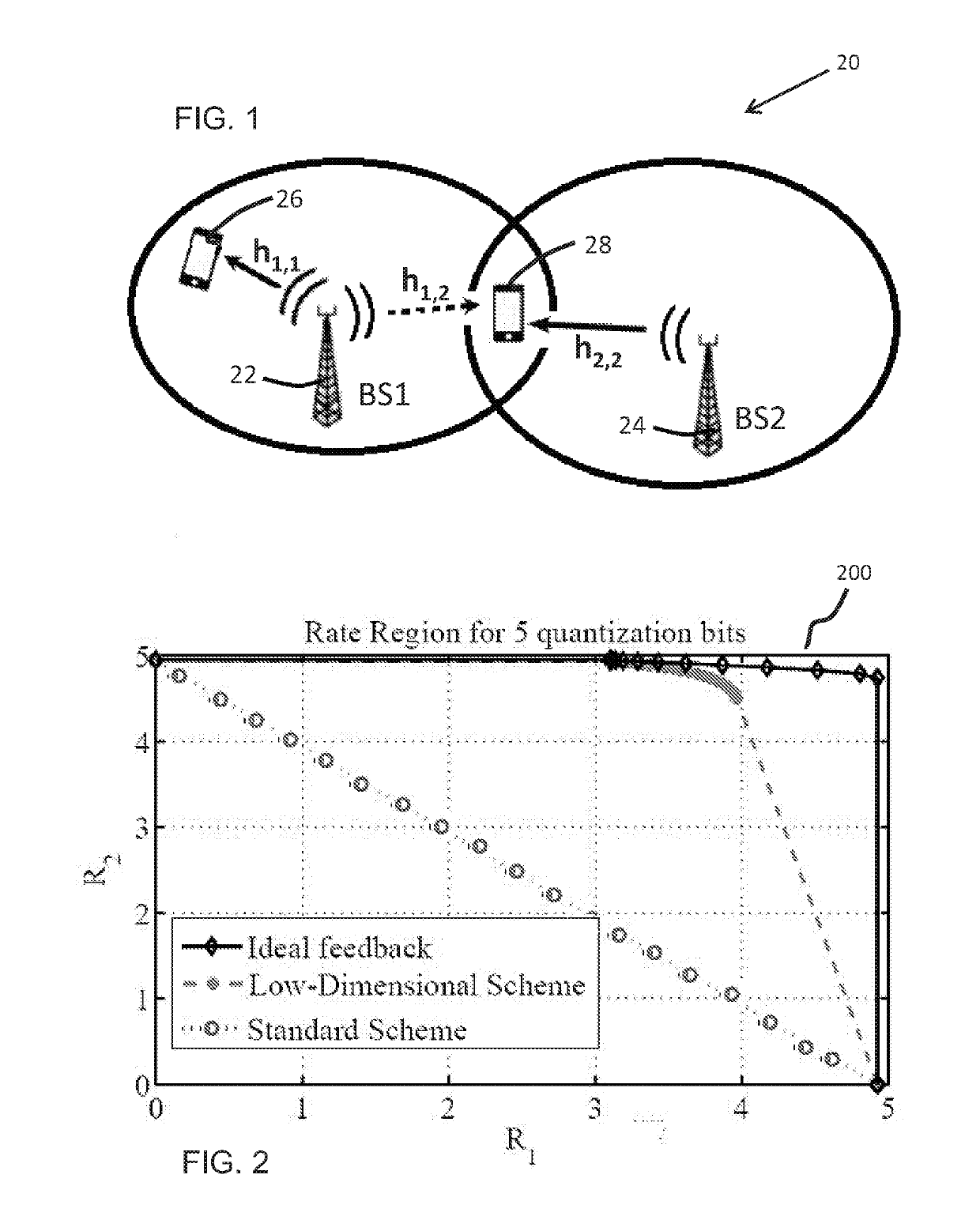System and method for reduced overhead feedback scheme for interference mitigation in cellular networks
a technology of overhead feedback and interference mitigation, applied in the field of cellular networks, can solve the problems of limiting the overall network throughput, limiting the range of interference, and being less suitable for moderate/high doppler spread, so as to reduce interference channel dimensions, reduce congestion, and improve interference suppression
- Summary
- Abstract
- Description
- Claims
- Application Information
AI Technical Summary
Benefits of technology
Problems solved by technology
Method used
Image
Examples
Embodiment Construction
[0019]Reference is now made to FIG. 1, showing a simplified diagram of a cellular network 20 comprising two cellular base stations BS1 (22) and BS2 (24) and two cellular user equipment devices UE1 (26) and UE2 (28). It is to be understood that more base stations and user equipment devices are typically active in a, cellular network.
[0020]UE1 is being serviced by BS1. UE2 is being serviced by BS2 while also receiving signals from BS1; that is, the signals of BS1 sensed by UE2 interfere with the signals received from BS2. The network may be analyzed as a multiple-input, single-output (MISO) interference channel, where each BS employs n transmit antennas, and each UE employs a single receiver antenna.
[0021]BS transmitters transmit initial signals, which may be pilot or training signals, from which the served UEs (intended UEs) estimate the direct channels. Let ĥu, i=1, 2, denote the estimated direct channel in a first round of channel estimation.
[0022]Network 20 is a two-user MISO inte...
PUM
 Login to View More
Login to View More Abstract
Description
Claims
Application Information
 Login to View More
Login to View More - R&D
- Intellectual Property
- Life Sciences
- Materials
- Tech Scout
- Unparalleled Data Quality
- Higher Quality Content
- 60% Fewer Hallucinations
Browse by: Latest US Patents, China's latest patents, Technical Efficacy Thesaurus, Application Domain, Technology Topic, Popular Technical Reports.
© 2025 PatSnap. All rights reserved.Legal|Privacy policy|Modern Slavery Act Transparency Statement|Sitemap|About US| Contact US: help@patsnap.com



